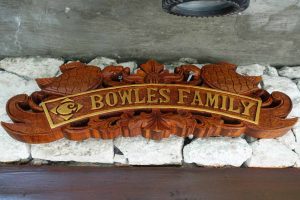
Wakatobi
Finally. We made it! After scrambling to find a flight out of Darwin, passing through Singapore, one day in Jakarta, two in Makassar, we finally caught a break. The uncertainty surrounding the volcanic eruption on Bali prompted Wakatobi to change their charter flight from Denpasar (Bali) to Makassar. Instead of a local flight to either Kendari or Wangi-Wangi followed by several hours of bus and boat travel, we were able to fly from Makassar to Tomia (one of the four main Tukangbesi Islands that give Wakatobi—Wangi-Wangi, Kaledupa, Tomia, Binongko–its name). From Tomia, it was only a short ride from the airport to the dock where two dive boats were waiting to take us the last 20 minutes to the small neighboring island where the resort is found.

Nothing says “Welcome” like a personalized, hand-carved mahogany placard over the door of your villa.
It wasn’t hard to settle into our 2-bedroom villa with a private pool overlooking the ocean (believe me, it’s better than it sounds)!
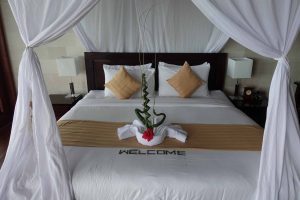
I think we have found paradise!
After a nice lunch, Alex, Maile and I met Yono–our private dive guide–for a briefing. Twenty minutes later we were in the water, diving Wakatobi’s House Reef. It was only the three of us. Unfortunately, by the time we arrived Stacy was suffering from food poisoning. Since we never made it there we can’t rightly call it Bali Belly; let’s just say it was Makassar’s Revenge. Hopefully, a good night’s sleep (and a couple of Cipro) will take care of it.
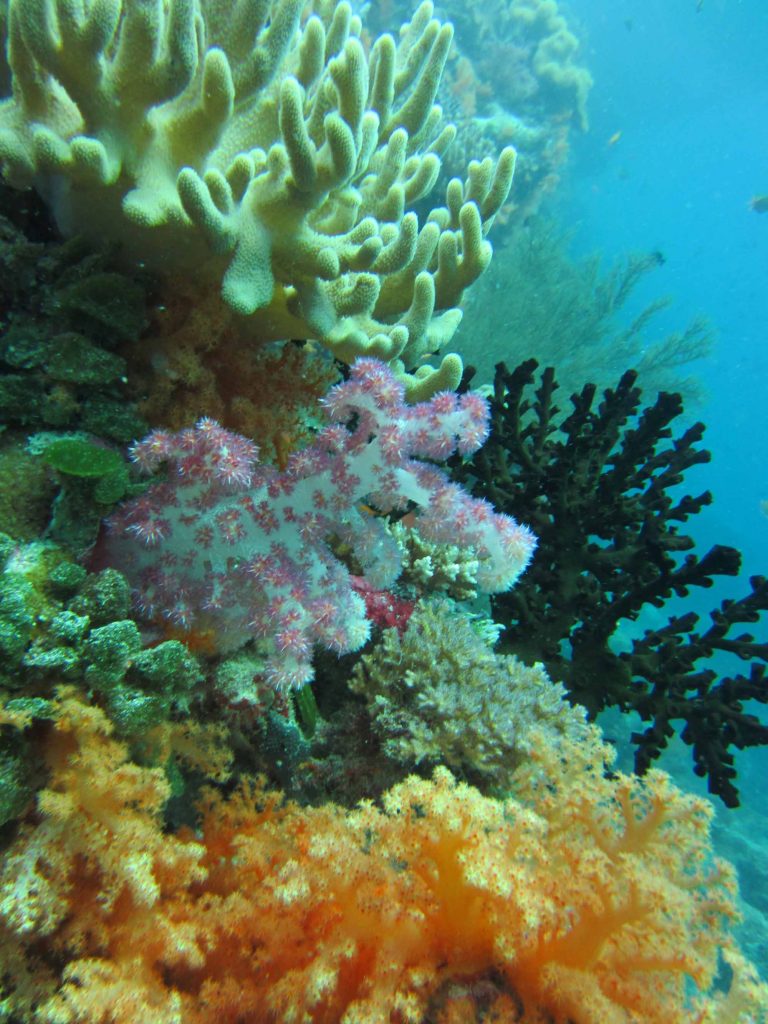
House Reef, Wakatobi
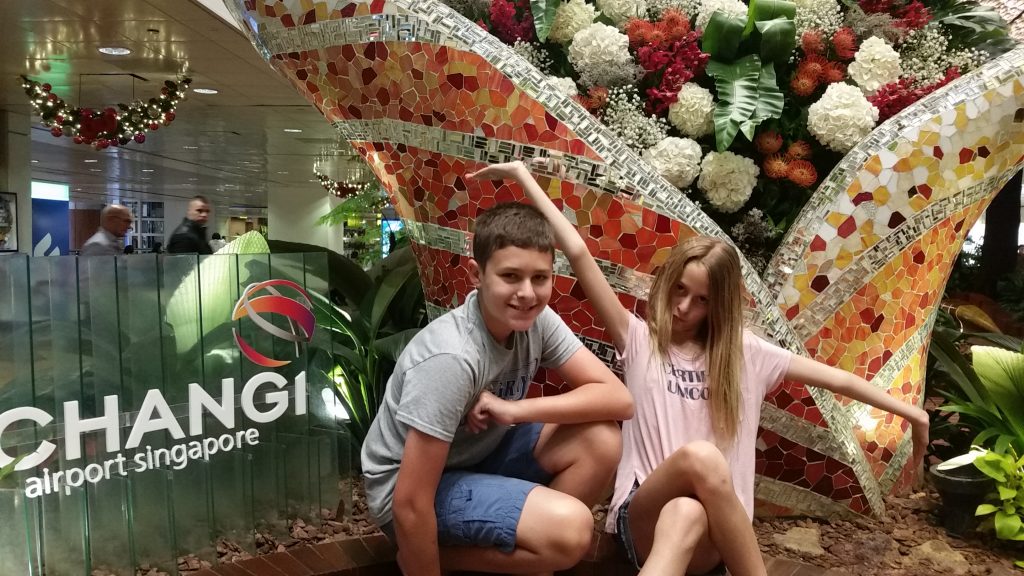
Singapore?
Never planned to be here but at this point, we are just winging it. Kids are having fun–Changi Airport is like an amusement park. They are already asking when we can return. Video games, movie theaters, a butterfly garden (plus others dedicated to orchids, sunflowers, fairies). . . Our 3-hour layover was too short for them.
I’ve never been, but I suspect Jakarta may not be quite as nice. We’ll find out soon enough.

Changi Airport, Singapore
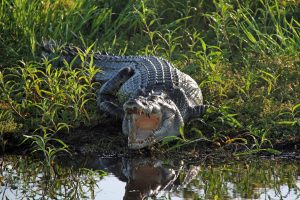
The Top End
Darwin, Northern Territory—the Top End of Australia. Totally different than the other places we have been so far. Hot, humid, tropical. We came for the parks and the animals. First, Kakadu: a huge park, more than a third of it wetlands. Famous for its birds and crocodiles, and we saw plenty of both. Cruising the South Alligator river (like Heron Island, named in error as there are no alligators in Australia) and the surrounding billabongs, we saw numerous large salt water crocs (they grow up to 5 meters up here!) as well as spectacular bird life.

Kakadu Crocodile
Currently we are in Adelaide River, near Litchfield National Park. Looking for swimming holes today! We are surrounded by wallabies here.
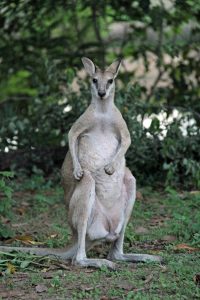
Wallaby in our front yard.
In other news, Gunung Agung is erupting on Bali, the airport has been closed for days and will probably remain so. As we were scheduled to fly to Bali tomorrow, this presents a problem. With tens of thousands of people stranded on Bali and everyone else trying to shuffle flights, it has actually been a very big problem. Fortunately, here in Adelaide River there is internet access–3 kilometers away at the Post Office. After much ado, we have a new plan. Well, part of a plan. We are going to fly to Jakarta on Friday (via Singapore). That is the plan so far (barely even a concept!). From Jakarta we are hoping to fly to Makassar (on Sulawesi, Indonesia). From Makassar, I have heard it is possible to fly to a small place further afield on Sulawesi (Wangi-wangi island) which is only 4 hours by boat from Wakatobi, which is where we would really like to be. Wish us luck!
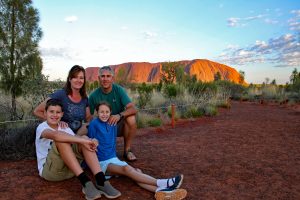
Uluru
Iconic. While the word is probably overused, there is no doubt that it applies to Uluru. The only thing that probably surpasses it as the most recognizable landmark in Australia is Sydney’s Opera House. The Opera House is spectacular–perfectly situated on Bennelong point with the Harbor Bridge just beyond–there is no doubt. But if the Opera House is the face of Australia, there is no doubt that Uluru is the heart, figuratively and literally. It is found in the heart of Australia, an area known as the Red Centre. A national park encompasses both Uluru and a neighboring rock formation, Kata Tjuta. Uluru is a massive sandstone monolith that rises 1,142 feet from the desert plain surrounding it. It seems to be the only thing occupying an otherwise featureless plain. Even Kata Tjuta is more than 20 miles away.
From the air and at a distance Uluru impresses with is size and isolation, a monstrous rock protruding with nothing else in sight. To say it dominates the landscape doesn’t do it justice. It IS the landscape. Instantly recognizable. . . Iconic. As you get closer though, Uluru comes alive. We were lucky to arrive after a very wet year and the desert was greener than I would have imagined the Australian Outback to be. Closer yet, pools of water could be found with black-streaking algae cascading down from the heights, like shadows of the waterfalls that created them. Looking even closer, in the shady caves at the base of the monolith, are pictographs telling the stories of the Aboriginal people who have lived here for tens of thousands of years. The traditional owners of Uluru and the surrounding lands, the Anangu, still live here and still use these caves for the ceremonies like their ancestors have for countless generations. Areas of particular significance to the Anangu are not accessible to tourists, and many other areas can be approached but not photographed out of respect for their beliefs and traditions. It wasn’t always like this, but in 1985 the Australian government gave the land back to the Anangu, who in turn leased it back to the government with the stipulation that the park is jointly managed by the Anangu and the Director of National Parks.
I wasn’t sure what to expect, coming to Uluru from southern Utah. Having spent so much time among our wealth of spectacular red rock landscapes, I did not know if it would be slightly less impressive with subconscious comparisons of our rocks to theirs. Not to worry, Uluru exceeded my expectations. From a distance, it is just as spectacular, just as imposing as the classic photos make it out to be. Images fail to capture the evolution of changing colors throughout the day or the lush pockets of life hidden in the various cracks and folds of the rock, or the Anangu culture that surrounds Uluru. Uluru truly is iconic; instantly recognizable, but so much more than a large lump on a desert plain. You really need to appreciate the different perspectives offered as you circle the monument on the base walk, and learn more about the cultural significance of Uluru to the Anangu people from a park ranger on the Mala walk to appreciate what makes Uluru the heart of Australia.

Family photo at sunrise
